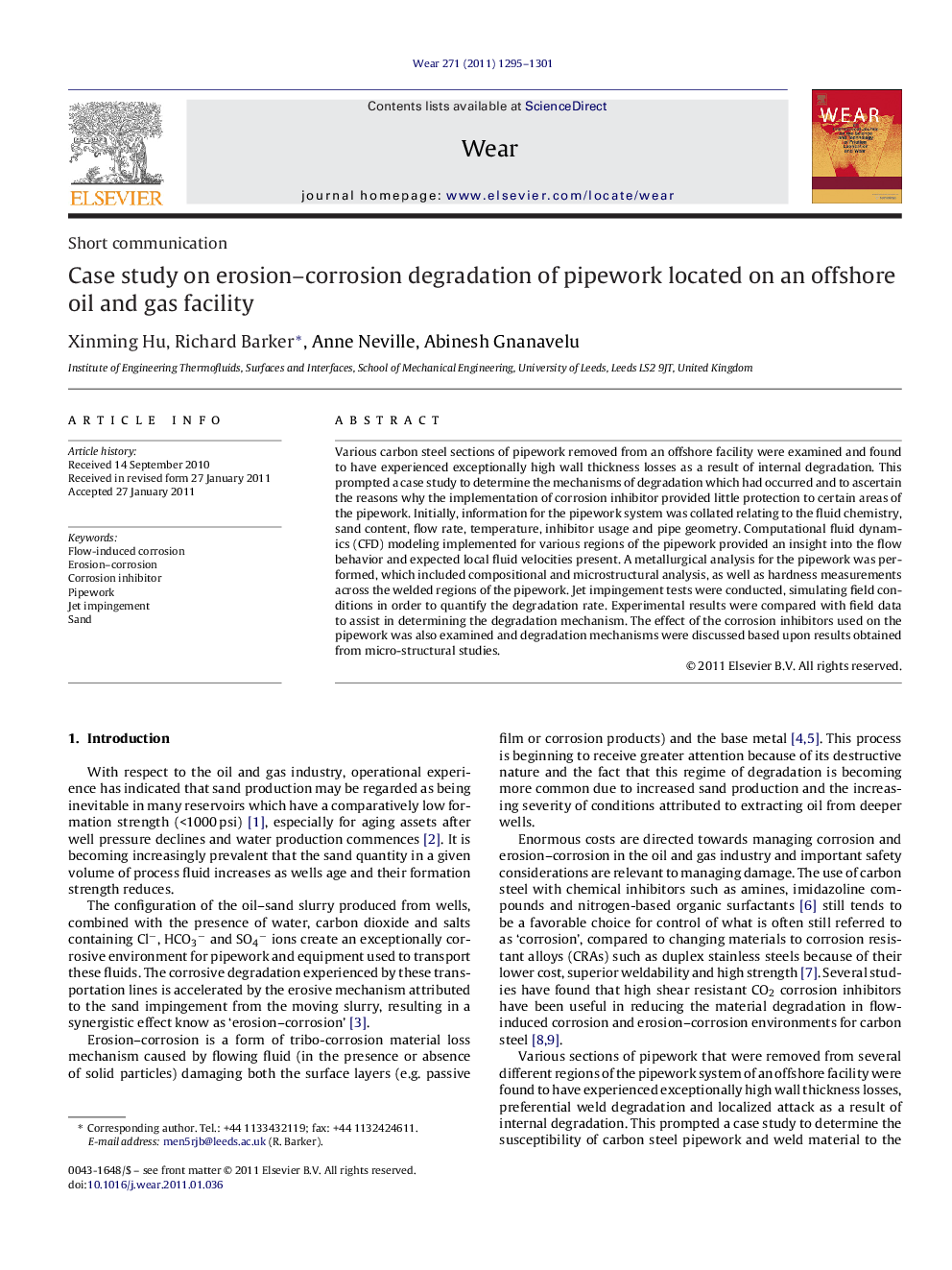| Article ID | Journal | Published Year | Pages | File Type |
|---|---|---|---|---|
| 618162 | Wear | 2011 | 7 Pages |
Abstract
Various carbon steel sections of pipework removed from an offshore facility were examined and found to have experienced exceptionally high wall thickness losses as a result of internal degradation. This prompted a case study to determine the mechanisms of degradation which had occurred and to ascertain the reasons why the implementation of corrosion inhibitor provided little protection to certain areas of the pipework. Initially, information for the pipework system was collated relating to the fluid chemistry, sand content, flow rate, temperature, inhibitor usage and pipe geometry. Computational fluid dynamics (CFD) modeling implemented for various regions of the pipework provided an insight into the flow behavior and expected local fluid velocities present. A metallurgical analysis for the pipework was performed, which included compositional and microstructural analysis, as well as hardness measurements across the welded regions of the pipework. Jet impingement tests were conducted, simulating field conditions in order to quantify the degradation rate. Experimental results were compared with field data to assist in determining the degradation mechanism. The effect of the corrosion inhibitors used on the pipework was also examined and degradation mechanisms were discussed based upon results obtained from micro-structural studies.
Related Topics
Physical Sciences and Engineering
Chemical Engineering
Colloid and Surface Chemistry
Authors
Xinming Hu, Richard Barker, Anne Neville, Abinesh Gnanavelu,
